With Column reports, you select which columns to display, and which filters to set. The resultant report can be sorted by any of the fields displayed, with a single mouse click. Column reports can be saved as personal or public reports. You are able to select from any fields to which you have read permission. To prepare a new Column report, choose the Create New Column Report option. The screen presented to you will be similar to the following:
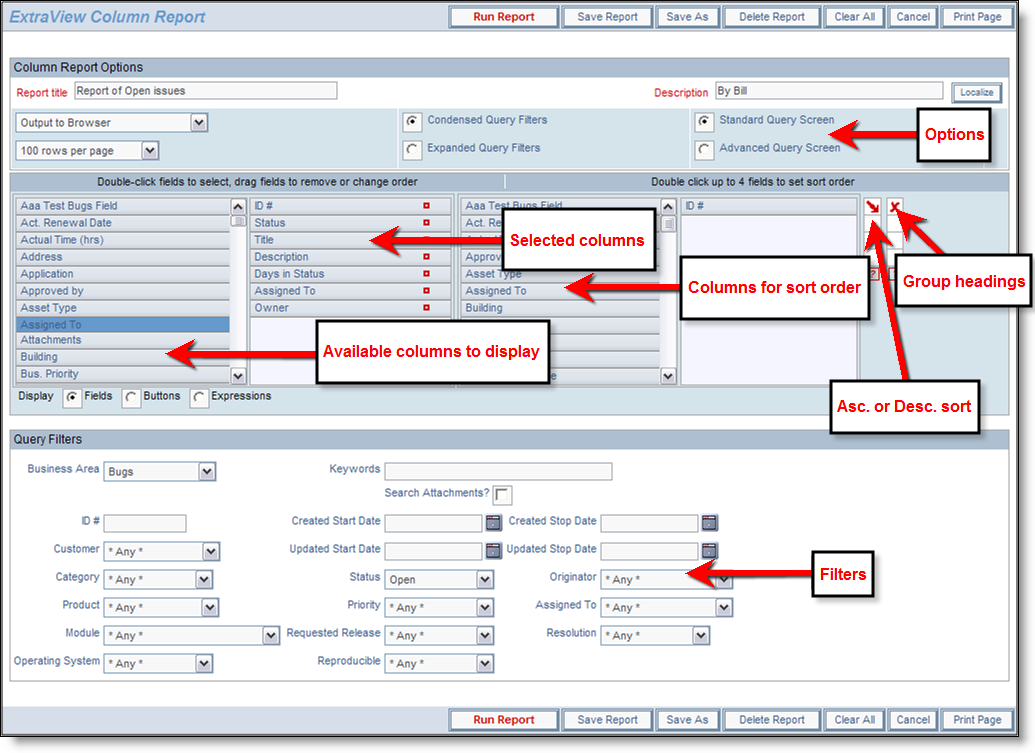
Creating a column report
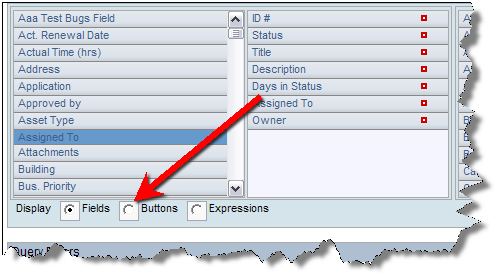
Once a column has been selected to display on a report, a small button appears to the right of the field. This allows you to set options or attributes, according to the type of field. To view or change the attributes, place your mouse cursor over the button, and press the right-hand mouse button. A window pops up, giving access to the available attributes.
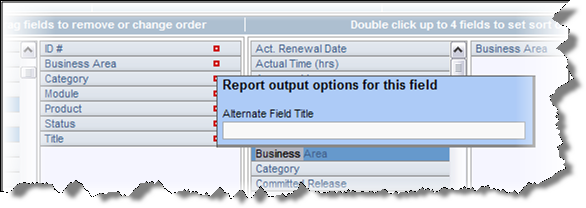
Selecting options for the Category column
In the example shown, the user right-clicked on the Category field, and they can now enter an alternative title for the field to be displayed on this report’s output.
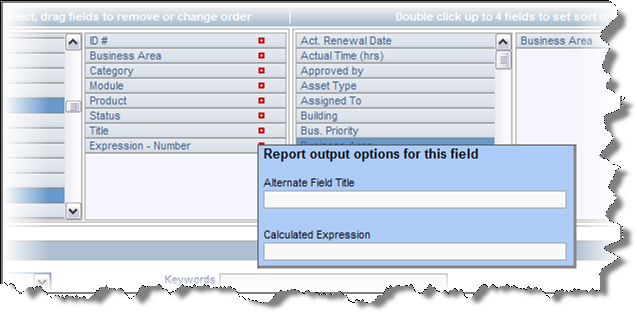
Selecting options on a field that allows calculated expressions
If the field you selected allows calculated expressions, then the popup window offers a place in which to enter the calculations. Calculated expressions are more fully explained in the Administration guide, but as their name implies, you may use these in one of a number of ways:
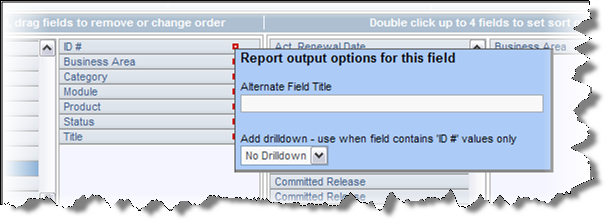
Drilldown option for text fields
Text fields, such as the issue ID field have one additional option, which allows a link to drilldown into the issue to be placed on the field when it is output to a report. This drilldown may be to the Detailed report, using the View function, or to the Edit screen, using the Edit function.
Note: You should only place a drilldown on a field that contains an issue number, such as Issue ID or a field with a related issue number. It is likely that using a drilldown will generate an error if there is not a valid ID.
| Field Display Type | Expression Results |
| Number, Currency, Decimal | The result will be numeric. For example, you may add or multiply different fields together: To calculate a field that shows the total of an amount plus 8% tax, use an expression similar to: $$AMOUNT$$ * 1.08 |
| Date, Day | The result will be another date. For example, if you want to calculate a due date, one week after a given date, you may use an expression similar to: $$DUE_DATE$$ + 7 |
| Text | This can be used to concatenate different text values together. For example, to produce a full name from a field named MYNAME plus a field named MYID, you may use an expression similar to: $$MYNAME$$ || ’ ‘ || $$MYID$$ Note the use of the || to concatenate text strings together. This is because the underlying database uses this convention as opposed to using the more natural + to concatenate two text strings. Also, note the use of single quotes around text literals. This is a standard SQL database convention. Double-quotes do not work, and you will receive an error if you use these. |
If there are numeric fields on the report that you have prepared, and the administrator has enabled totaling on the field, then the numeric fields displayed will be totaled.
You can click on column titles to sort the report by the values in that column. Note that your administrator must have elected to allow sorting on each field, so not every column on a report may be sortable in this way. If it is sortable, a small grey icon appears to the right of the field. Click on the column title or icon to sort the output. One click sorts the column descending, and one more click sorts the column contents ascending.
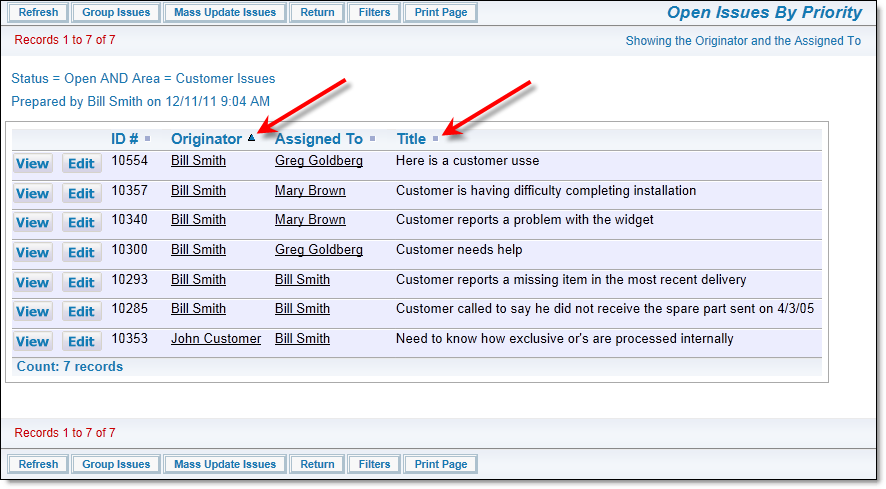
If you click on the rightmost box by a field you have selected as a sort order, then the field is promoted to become a group heading on the output display. This is seen below, when the field Business Area and Assigned To fields were checked and were promoted to group headings.
All four sort order fields that can be selected can be promoted to become group headings on a column report.

Sample column report with group headings